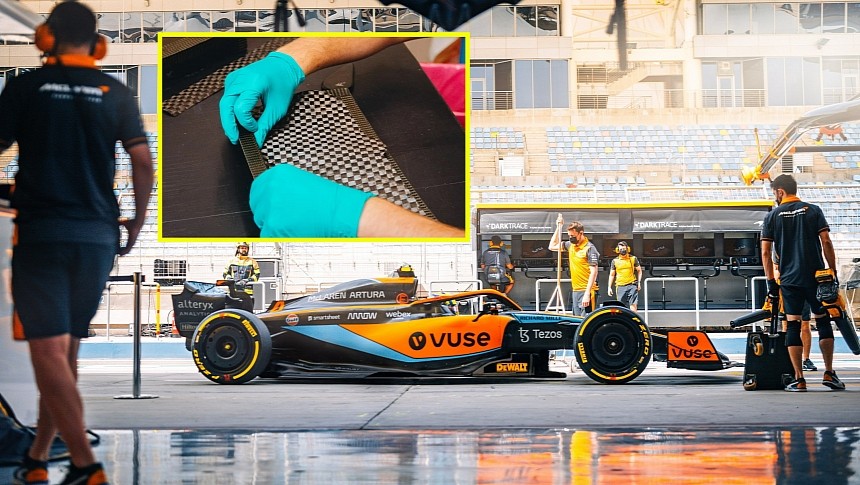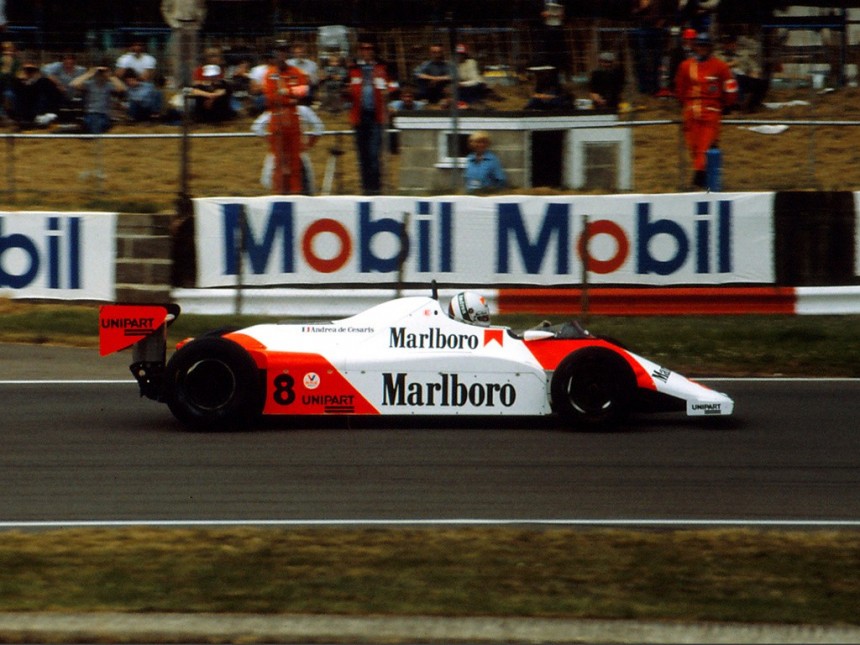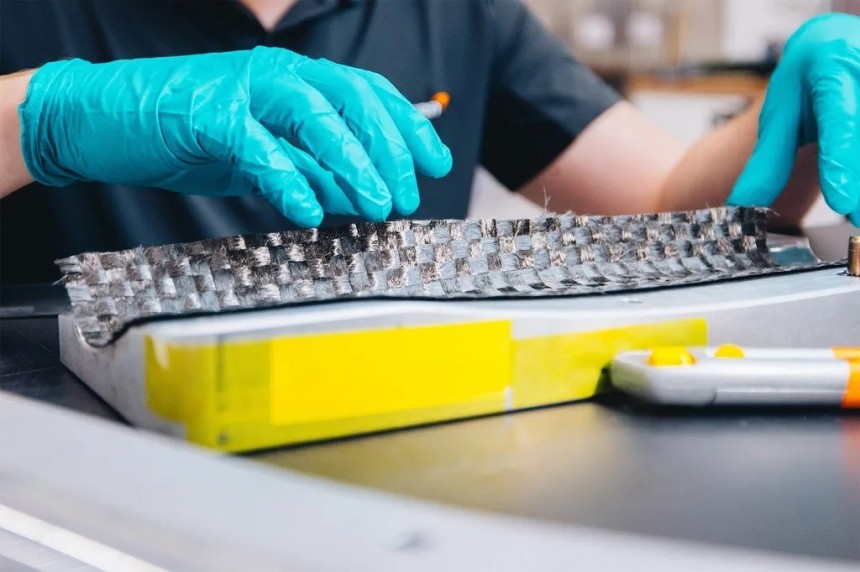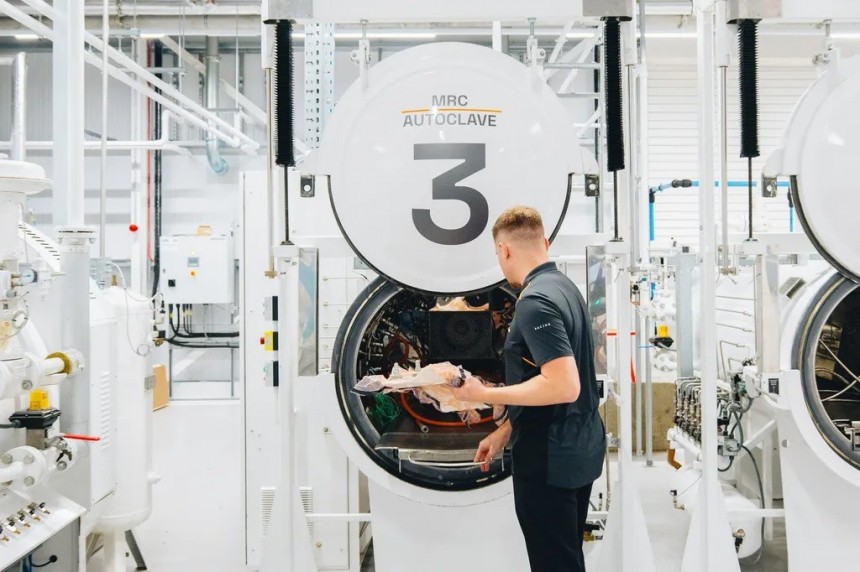McLaren was the first to push the boundary of chassis making by using carbon fiber. That, believe it or not, happened in 1981. The British marque's solution was so ahead of its time that it even attracted NASA's praise. Today, McLaren is playing with carbon fiber again. However, this time is a bit different: it benefits Mother Earth! Here's the gist of it.
Forty-two years ago, McLaren created the MP4/1 racing car and introduced it to real F1 racing. It was built entirely from carbon fiber composites and proved incredibly safe at Monza when John Watson escaped scot-free from a nasty contact with a barrier.
It was a redefining moment for the motorsport and the participating teams. American supplier Hercules Aerospace (who also worked with NASA) was especially thrilled about the outcome – the solution worked!
Carbon fiber is well known for being a lightweight and durable material. It's been widely used by high-performance cars. Most commonly, it's seen on roofs of vehicles like the M5 or E 63. It comes as an option or a standard part that's included to enhance the sportiness of gas-powered cars that hide potent powerplants under their hood. It helps with keeping the center of gravity lower.
Nowadays, most brands also offer a plethora of carbon fiber accessories. The material is synonymous with high performance, which allows automakers to use it for aesthetic purposes. It can be marketed to affluent gearheads for improved profit margins.
Carbon fiber is made from polyester, which is super cheap. But the end material is pricey because it's tricky to make precisely the carbon fiber reinforced plastic (CFRP) you want. The manufacturer must ensure the desired form is achievable without comprising the structure that enables the enhanced safety characteristics of the end material.
Today, F1 participants use carbon fiber containing a honeycomb (hexagons are a great shape for strong structures) aluminum layer tightly put between two sheets of carbon fiber. Of course, things are a bit more intricate as you go deeper into the motorsport-specific engineering.
Last year, for example, some F1 suppliers had to find new solutions so the cars would remain lightweight but become even stronger. But they also had to keep costs under control because new budget caps were introduced.
F1 cars need to be painted because they have a certain appearance that helps fans identify their team when they see "arrows," like the MCL60, sprint around the track at speeds of over 200 mph. But since every bit of shaved weight counts, it's important to find clever ways to apply paint without impacting performance.
And it's incredibly hard to recycle it. The material is abundant and doesn't cost much. Putting it into the circular economy would be amazing, but sadly, it's nearly impossible. Sorting and collecting, for example, aren't worth it for businesses. They must ensure the materials match when the disposed product is melted and remolded. It's not hard, but it's not economically viable internationally.
But despite all these challenges, McLaren found a way to recycle carbon fiber, a material that's much more complicated to reintroduce in use after it was deemed unworthy.
Today, McLaren doesn't work with a NASA supplier for its carbon fiber, but it has broken the barrier of turning this material into a recyclable one. It's part of the brand's ambition to create a "fully circular F1 car," meaning nothing ends up in the trash can.
The process is quite complicated and requires not only impressive skills but a lot of meticulous attention. After the marque takes delivery of the material, it gets put in a freezer.
You might wonder why. Well, as stated above, carbon fiber is made from plastic. This material expires after a certain period. Bottled water, for example, has an expiration date of approximately two years. That's not because the H20 goes bad, but due to the plastic container not being strong enough. Some plastic particles escape their links and leech into the water.
That's why freezing the recycled carbon fiber is a smart move.
The material is defrosted before molding and laminating. The latter is when resin is added to reinforce it.
Layers of rCF are stacked on top of each other, and a vacuum bag is used to suck all the air out. Any tiny bubble could compromise its structural integrity, so that's a crucial step.
That continues until the desired thickness is obtained. The end product is covered in a release film and a vacuum bag. The latter is used for the last time because the product is put into a press, and all the air must be sucked out to allow the layers to stick to each other.
Keep in mind that Lego tried to use recycled plastic (mainly drink bottles) for its popular bricks but found that the process would be even more carbon-intensive than just using the tried-and-tested oil-based manufacturing procedure.
But probably what's more intriguing here is that this entire idea was spearheaded by an apprentice who is responsible for making the rCF. Jacob Tidy also wants to use bio-based vacuum bags because the ones used for rCF are being disposed of after every step.
Sadly, the plastic used to make carbon fiber for F1 racing cars might not greatly impact our world.
Global demand for carbon fiber is expected to reach 262,000 tons by 2025, per McLaren. In comparison, global plastic production reached almost 310 million tons in 2021. That's over 1,183 times more than the expected carbon fiber demand. Even worse, plastic production is forecasted to amount to 445 million tons by 2025.
However, if there's one place where major auto brands should experiment, it's Formula 1. If this courageous project proves viable on a larger scale, it'll eventually trickle down to production-ready vehicles. Let's hope it happens. Every little bit of progress will help our world combat global warming.
Finally, McLaren says it's determined to be at the heart of a sustainability sea-change across Formula 1. As part of its four-pillared sustainability strategy, the brand aims to reduce its greenhouse gas footprint by 50% by 2030 and become net zero by 2040. It also plans to accelerate the transition to a circular economy.
It was a redefining moment for the motorsport and the participating teams. American supplier Hercules Aerospace (who also worked with NASA) was especially thrilled about the outcome – the solution worked!
Carbon fiber is well known for being a lightweight and durable material. It's been widely used by high-performance cars. Most commonly, it's seen on roofs of vehicles like the M5 or E 63. It comes as an option or a standard part that's included to enhance the sportiness of gas-powered cars that hide potent powerplants under their hood. It helps with keeping the center of gravity lower.
Nowadays, most brands also offer a plethora of carbon fiber accessories. The material is synonymous with high performance, which allows automakers to use it for aesthetic purposes. It can be marketed to affluent gearheads for improved profit margins.
The magical element
A good thing to keep in mind is that CFRP is like diamonds. The main raw material of both products is strings of carbon atoms that are cheap to source, but the result matters. Both require impressive human skills, delicate processes, and pricey machines to achieve that much-wanted beautiful form factor and use case.Today, F1 participants use carbon fiber containing a honeycomb (hexagons are a great shape for strong structures) aluminum layer tightly put between two sheets of carbon fiber. Of course, things are a bit more intricate as you go deeper into the motorsport-specific engineering.
Last year, for example, some F1 suppliers had to find new solutions so the cars would remain lightweight but become even stronger. But they also had to keep costs under control because new budget caps were introduced.
Contrary to popular belief, life in plastic is not fantastic
Another problematic aspect of carbon fiber is that it's made from plastic. There's no beating around the bush about it: we have a global issue with this material. It's cheap to make. It's very useful and durable. It also has many applications in a variety of industries. Those characteristics are what made it very popular worldwide. So much so that it's even present in clouds in the form of microplastics – tiny particles we can't see but can cause many unwanted troubles.And it's incredibly hard to recycle it. The material is abundant and doesn't cost much. Putting it into the circular economy would be amazing, but sadly, it's nearly impossible. Sorting and collecting, for example, aren't worth it for businesses. They must ensure the materials match when the disposed product is melted and remolded. It's not hard, but it's not economically viable internationally.
But despite all these challenges, McLaren found a way to recycle carbon fiber, a material that's much more complicated to reintroduce in use after it was deemed unworthy.
One courageous step forward
For the time being, recycled carbon fiber (rCF) is being used on non-structural parts. The material is provided by a company known as V Carbon. McLaren then uses these leftovers from other projects to create the cockpit branding panels on its two F1 racing cars. You'll see them in action at the Austin Grand Prix in Texas.The process is quite complicated and requires not only impressive skills but a lot of meticulous attention. After the marque takes delivery of the material, it gets put in a freezer.
You might wonder why. Well, as stated above, carbon fiber is made from plastic. This material expires after a certain period. Bottled water, for example, has an expiration date of approximately two years. That's not because the H20 goes bad, but due to the plastic container not being strong enough. Some plastic particles escape their links and leech into the water.
That's why freezing the recycled carbon fiber is a smart move.
The material is defrosted before molding and laminating. The latter is when resin is added to reinforce it.
That continues until the desired thickness is obtained. The end product is covered in a release film and a vacuum bag. The latter is used for the last time because the product is put into a press, and all the air must be sucked out to allow the layers to stick to each other.
Keep in mind that Lego tried to use recycled plastic (mainly drink bottles) for its popular bricks but found that the process would be even more carbon-intensive than just using the tried-and-tested oil-based manufacturing procedure.
Small impact, amazing potential
Thus, what McLaren is doing here is very, very impressive and might pave the way for a much greener F1. The motorsport has great ambitions in this regard and wants to lower its carbon footprint as much as possible. Starting in 2026, racing teams will have to fill up with renewable fuel and have their cars make more power without increasing consumption. It's going to be stricter and stricter!But probably what's more intriguing here is that this entire idea was spearheaded by an apprentice who is responsible for making the rCF. Jacob Tidy also wants to use bio-based vacuum bags because the ones used for rCF are being disposed of after every step.
Global demand for carbon fiber is expected to reach 262,000 tons by 2025, per McLaren. In comparison, global plastic production reached almost 310 million tons in 2021. That's over 1,183 times more than the expected carbon fiber demand. Even worse, plastic production is forecasted to amount to 445 million tons by 2025.
However, if there's one place where major auto brands should experiment, it's Formula 1. If this courageous project proves viable on a larger scale, it'll eventually trickle down to production-ready vehicles. Let's hope it happens. Every little bit of progress will help our world combat global warming.
Finally, McLaren says it's determined to be at the heart of a sustainability sea-change across Formula 1. As part of its four-pillared sustainability strategy, the brand aims to reduce its greenhouse gas footprint by 50% by 2030 and become net zero by 2040. It also plans to accelerate the transition to a circular economy.





















